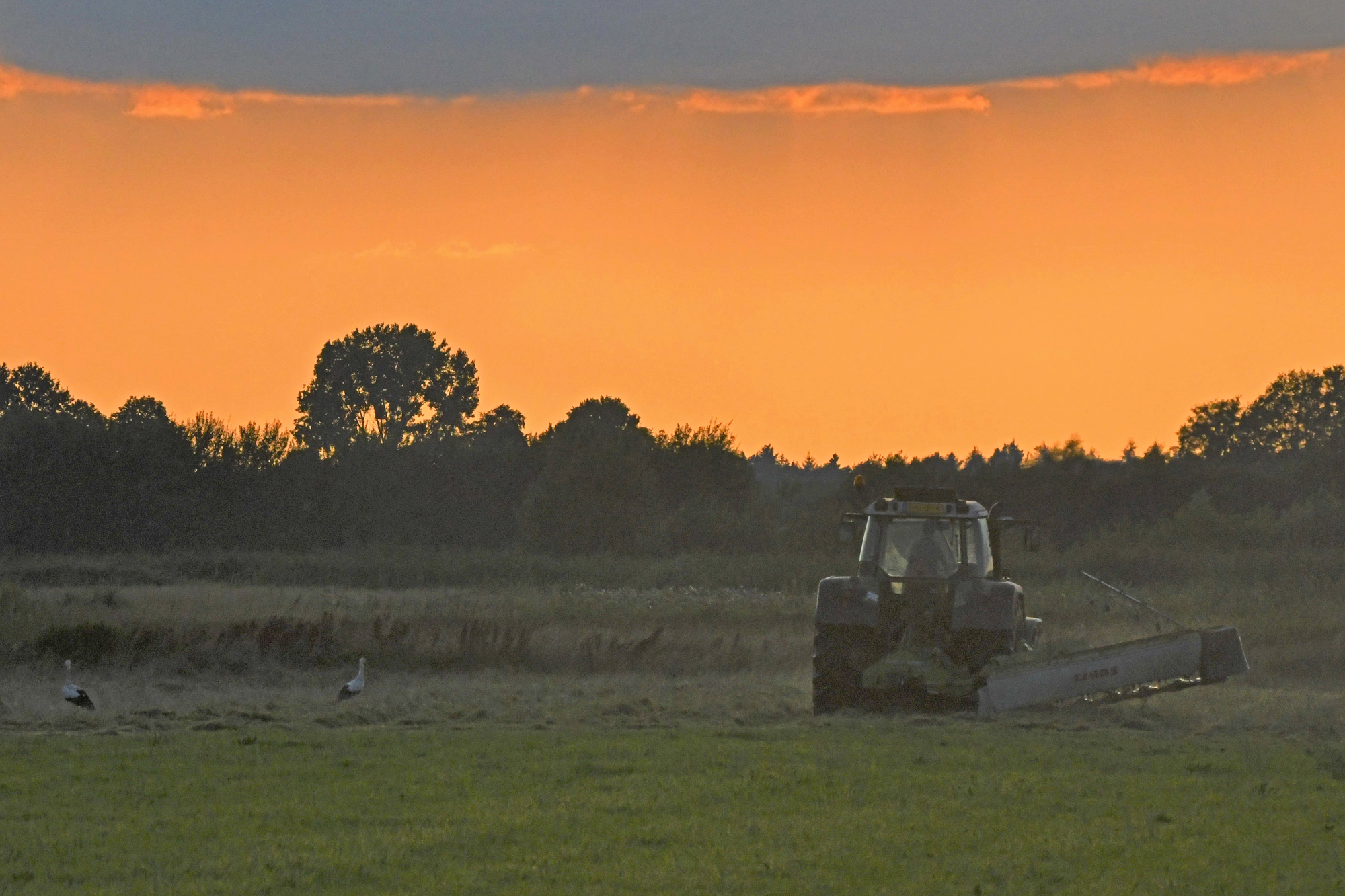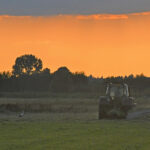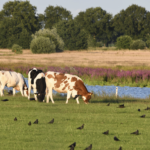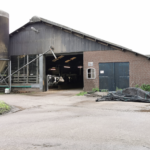(Photo Credit: J. Verschuuren)
By Jonathan Verschuuren, Tilburg University[1]
Introduction
Agriculture is a major driver not only of climate change, but also of a range of other environmental problems, such as land-use change, biodiversity loss, depletion of freshwater resources and pollution of aquatic and terrestrial ecosystems through nitrogen and phosphorus run-off from fertilizer and manure application.[2] Agriculture is the major driver of four of the five planetary boundaries that already are in the high risk or increasing risk zones, and a significant driver of many of the planetary boundaries that still in the safe zone.[3] Global population growth and increasing affluence in countries like China and India will lead to further intensification of the environmental pressures of the food system.[4] Another major issue of the global food system is that it is linked to underconsumption, particularly (but not only) in developing countries, overconsumption, particularly (but not only) in developed countries, and a lack of sufficient micronutrients (in both developing and developed countries).[5] A global transition to a healthy and sustainable food system is therefore advocated by scholars from a range of disciplines,[6] and the FAO.[7]Springmann and others conclude: ‘Synergistically combining improvements in technologies and management, reductions in food loss and waste, and dietary changes towards healthier, more plant-based diets, with particular attention to local contexts and environmental pressures, will be a key challenge in defining region-specific pathways for the sustainable development of food systems within the planetary option space.’[8] The influential EAT-Lancet Commission on healthy diets from sustainable food systems advocates a ‘great food transformation’ by 2050 in order to achieve the UN Sustainable Development Goals and the Paris Agreement.[9] The main challenge of the future EU’s agriculture policy, therefore, is to help to set the great food transformation into motion. Such a transformation has many aspects, as just indicated, but the main focus will be on replacing animal source food with plant based food or other alternatives for meat and dairy, such as cultivated meat.
- How can farmers, and the rural communities they live in, be given a better perspective, including a fair standard of living?
The role of farmers is important, as in the transition process sufficient economically viable options need to be present, including that farmers play a role in the production process of cultivated meat and dairy. For plant-based meat and dairy products, the opportunities for farmers are quite obvious, as the growing demand for plant-based alternatives for meat and dairy leads to an increased demand for crops such as soy, lentils, peas, and other legumes. For cultivated meat, however, this is more uncertain at the moment as it is unclear what feedstock will be used by the cultivated meat and dairy industry. Research indicates, however, that it may well be that traditional agricultural crops will be used as input (e.g., barley, beets, corn, peas, soy, sugarcane, wheat), although less traditional crops may also play a role (e.g., algae, fungi, seaweed, yeast, and a range of bacteria for the cultured-milk fermentation processes).[10] In addition, some farmers may keep a small herd of animals to provide the cells necessary for cultivated meat production.[11] All of the above is primarily ruled by the market, but regulators may choose to intervene, for example by requiring cultured meat producers to involve (local) farmers. Such interventions may limit the risk that a small number of large multinational corporations monopolize the production of cultivated meat and dairy. Ideally, such market intervention should happen at the EU level so as to avoid or at least reduce potential conflicts with competition law.
It should be stressed here that for the current livestock farmers, their role in the production of cultivated meat and dairy (and plant-based products for that matter) is only one of many ways to transition to a more sustainable farming business. In fact, these farmers will have to completely reinvent their farm. Many, if not all of them will need to be assisted in this transition toward a drastically different type of farming business.
- How can agriculture be supported within the boundaries of our planet and its ecosystem?
Especially livestock farmers will need financial and practical support and sufficient time to make the transition. As there are many different roads to a more sustainable farming business for each individual farm, based on local environmental circumstances, individual preferences and expertise, local and regional markets, etc., an individualized approach will be necessary. The government could, for example, roll out a large program that allows farmers to hire consultants to help them with the transition. Newton and Blaustein-Rejto also point out that the government has the option ‘to create and/or support wider policies and programs that support just transitions for farmers and rural communities, including debt forgiveness, compensating for losses incurred, and funding (re)training initiatives’.[12]
Part of such a wider policy will also be the instruments aimed at rewarding farmers for those environmental, climate-related and biodiversity related measures, especially in the CAP and the LIFE program. Member States can use the National Strategic Plans under the CAP to implement their policy to help livestock farmers diversify their farm. Other market opportunities for farmers are the selling of carbon credits obtained through carbon sequestration measures on their land under private and public carbon farming schemes.[13] Increasing attention across Europe to rewilding, especially its focus on large herbivores, also offers opportunities for livestock farmers to contribute to such plans through agricultural rewilding, such as breeding and ranching reintroduced species, possibly with associated eco-tourism activities.
- How can better use be made of the immense opportunities offered by knowledge and technological innovation?
One of the most promising technical developments is the emergence of cultivated meat and dairy and related unconventional meat alternatives such as microbial proteins as a potentially disruptive technology in the food market with large benefits for the climate, the environment, animal welfare and human health. There are three interconnected categories of regulatory interventions which may accommodate large-scale introduction of cultivated meat and dairy. First, the production of and demand for conventional meat and dairy can be reduced through drastically reducing livestock numbers and raising retail prices through higher production costs. EU climate and environmental laws are already being tightened, with the aim to limit negative impacts on the climate and the environment, but without a clear end-goal or overarching ambition in mind. The emergence of cultivated meat and dairy as a real alternative for conventional meat and dairy allows for the adoption of such an ambition. Without a clear policy on the phasing down of conventional meat and dairy, there is the risk that cultivated meat and dairy will remain a niche product on the market.
Second, and closely linked to the previous category, laws can be adopted that stimulate the production of and demand for cultivated meat and dairy and related alternatives. The price mechanism is the most obvious instrument here: raising the retail price of conventional meat and dairy and lowering that of cultivated meat and dairy, and, in the transition phase, allowing for blended products to avoid price shocks. An important element of a policy aimed at increasing the demand for cultivated meat and dairy is information and deliberation, as research shows that there is a real risk that a large group of consumers may not automatically accept this new technology.
Last, but certainly not least, the transition to cultivated meat and dairy has to be safe, nutritious, fair and sustainable. The safe and nutritious test is primarily aimed at the consumer and part of the authorization process under the EU Novel Foods Regulation. Given the fact that cultivated meat and dairy is as good as identical to meat and dairy from live animals, it is not expected that there will be any issues in this process. To make the transition fair is more challenging, as it requires the authorities to help a large group of livestock farmers across the EU to reinvent their farming business. It is important to understand that farmers will need to play an important role in the production of cultivated meat and dairy. Agricultural crops will be used as input in the cultivation process, some farmers may keep a flock of animals to provide the cells necessary for cultivated meat production, the cultivators can be placed on farms and be managed by farmers and farms can be used for producing and marketing locally produced products. In addition, livestock farmers may have surplus agricultural lands which they no longer need to graze animals or grow animal feed. These can be used, for example, for carbon sequestration and rewilding projects, provided there are legal rules in place that reward farmers for these projects. The current CAP and LIFE programs and the new EU rules on carbon farming are a start, but it would seem that more robust programs are needed. Finally, production needs to happen sustainably, which means, in particular, that the large amount of energy needed for the production of cultivated meat and dairy must be generated from renewables and not from fossil fuels.
- How can a bright and thriving future for Europe’s food system be promoted in a competitive world?
The world is on the eve of an agricultural and food transition aimed at reducing harmful environmental and climate impacts of agriculture and at reducing negative health impacts of unhealthy food, so as to be able to continue to produce sufficient and nutritious food to 11 billion people in 2050. It is clear that the current focus on animal source food is not sustainable and is endangering food security globally (there will not be enough space on the planet to grow all the food for our livestock to cover the needs of 11 billion people). Humanity’s diet of the future has to largely consist of plant based food. The EU can be a first mover in that direction and start the transformation of our agricultural sector now so that we are well prepared for the future and a key player on the global food market in the remainder of the 21stcentury.
[1] This text was submitted by the Legal Working Group of the Society for Ecological Restoration to the European Commission under the Strategic Dialogue on the Future of EU Agriculture. It relies on J. Verschuuren, ‘Achieving agricultural GHG emission reductions in the EU post 2030: what options do we have?’ (2022) 31:2 Review of Comparative, International and European Environmental Law 246-257 and J. Verschuuren, ‘Cultured meat and dairy as a game-changing technology in the agricultural and food transition in the EU: what role for law?’ in Zahar & Reins (eds.), Climate Technology and Law in the Anthropocene (Bristol University Press, forthcoming).
[2] Marco Springmann et al., ‘Options for keeping the food system within environmental limits’ (2018) 562 Nature 519.
[3] B M Campbell et al., ‘Agriculture production as a major driver of the Earth system exceeding planetary boundaries’ (2017) 22(4) Ecology and Society 8. In this important publication, Campbell et al. apply the planetary boundaries framework by Rockström, Steffen and others, see Will Steffen, Katherine Richardson, Johan Rockström et al., ‘Planetary boundaries: Guiding human development on a changing planet’ (2015) 347 Science 6223.
[4] Springmann et al. (n 2).
[5] Campbell et al. (n 2); Sara Capacci et al., The triple burden of malnutrition in Europe and Central Asia: a multivariate analysis(FAO Regional Office for Europe and Central Asia, Policy Studies on Rural Transition No. 2013-7).
[6] Campbell et al. (n 5); Springmann et al. (n 2).
[7] FAO, Transforming food and agriculture to achieve the SDGs, 20 interconnected actions to guide decision-makers (FAO 2018). Already in 2006, the FAO concluded that there should be a major policy focus on the livestock sector when dealing with land degradation, climate change, air pollution, water shortage, water pollution and loss of biodiversity, FAO, Livestock’s long shadow: environmental issues and options (FAO 2006) xx.
[8] Ibid. at 523.
[9] Walter Willett et al., ‘Food in the Anthropocene: the EAT–Lancet Commission on healthy diets from sustainable food systems’ (2019) 393 Lancet 448.
[10] Peter Newton, Daniel Blaustein-Rejto, ‘Social and Economic Opportunities and Challenges of Plant-Based and Cultured Meat for Rural Producers in the US’ (2021) 5 Frontiers in Sustainable Food Systems 624270, 4.
[11] Ibid., 4-5.
[12] Ibid., 8.
[13] Supported by the recently adopted Regulation of the European Parliament and of the Council establishing a Union certification framework for carbon removals.



